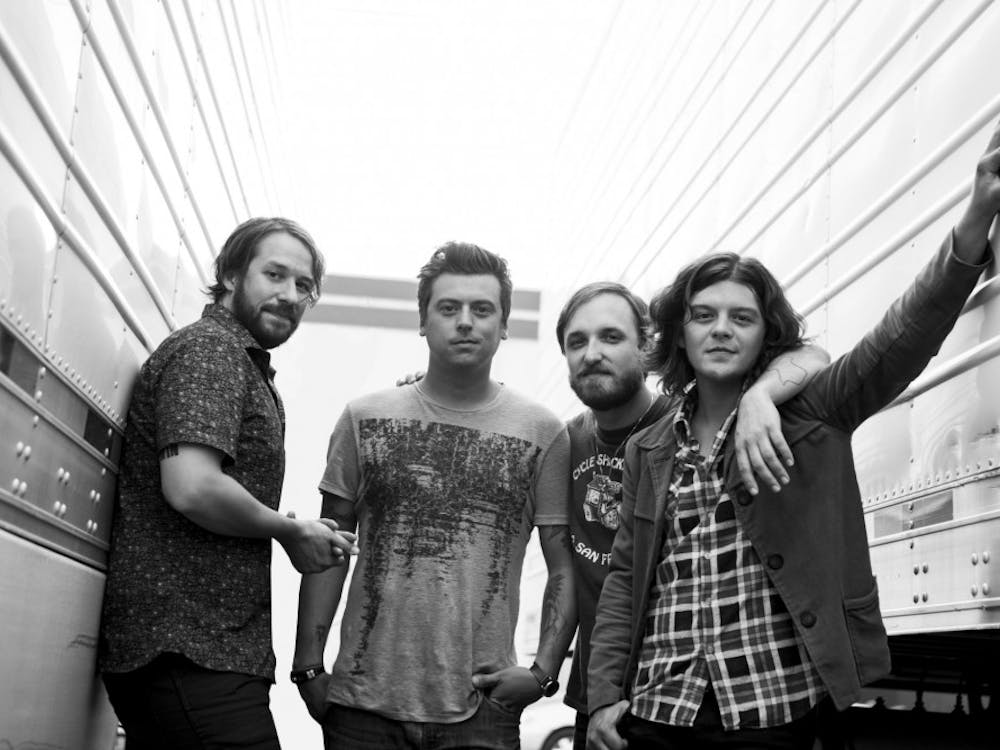Local artist Allen Kinast speaks about his exhibit in BC and the aesthetic behind it
By Gao Na Yang
Allen Kinast is the artist whose work is currently on exhibition in Buckley Center. Kinast's work has been featured in Art in the Pearl and is also one of the artists represented by the Museum of Contemporary Craft. His exhibit is significant at UP as it comprises recycled materials within each work of art. Although Kinast's schedule is chaotic and juggles family, work and art, he penciled in an interview via e-mail.
This exhibit was called "Cut Off." How and why did you choose this title for this particular showcase?
The title refers both to my process and to some painful emotions I've been working through in my personal life. I find that the material inspiration for new work often comes to me in a roundabout way. Often I'll be cutting a piece of wood for a commissioned piece of furniture, let's say, and there's something unique about the scrap piece of wood - the "cut off" - that just grabs a hold of me and won't let go.
Recently, I was cutting up pieces of reclaimed lath board (the wooden "ribs" that are found in lath and plaster walls) for some furniture work I was doing. I was in a hurry, so instead of de-nailing the lath as I usually do, I cut off the sections where the old nails were.
Suddenly I looked around my band saw and saw this pile of wooden squares with rusty nails sticking out of them. In these discarded bits and pieces I saw both a new textural possibility and strong metaphorical reference to pain. In the end, it's all about being really sensitive to the materials I interact with; to constantly try to see them with fresh eyes.
How did you get into making art for a living? Has art always been a passion?
About 12 years ago, I started taking night classes in furniture making at Oregon College of Art & Craft. These classes sparked my creativity and my desire to learn how to build things, and so I eventually ended up going back to school full-time.
I've always felt I had a keen appreciation for art, but it wasn't until I attended OCAC that I connected my appreciation for art with the positive feelings that come when you create something from your own imagination.
The descriptions alongside the pieces indicate that many of the pieces were created from "reclaimed" materials. What kinds of materials do you use, exactly, and why?
Most of my reclaimed materials are wood-based. I like the way I can utilize the patina of the wood's surface, yet transform it through the construction process.
I like the process of taking something that someone has discarded, and through my creativity and craftsmanship arriving at a new object that completely transforms that material into something new. I think I've always admired the resourcefulness of people who could make do with what they had.
Which piece is most memorable to you and why?
I really like the lath mosaic work I'm doing on pieces like the coffee table, "Something Missing," or the wall piece, "At Once." I think these pieces and the other pieces I've created in this style are very intellectually and emotionally stimulating at the same time.
The color scheme really stands out - especially the red, black and white pieces, as well as the use of blue in "One More Thing." Do you use colors to express certain emotions in the piece?
I like bold, earthy colors. Years ago, I was a Peace Corps volunteer in Papua New Guinea. The country has an amazing wood carving tradition, especially when it comes to things like shields. The colors I was exposed to there tended to be bright, earth tones. I try to keep my colors simple but very alive.
Milk paint is used a lot in your work. What exactly is it?
Milk paint refers to a type of paint that has been used since Egyptian times. It is made up of pigment and calcium carbonate.
Unlike a latex paint, which dries on top of a piece of wood, the calcium carbonate in the milk paint chemically bonds with wood.
When you burnish it, it creates this hard, egg-shell like sheen that has a very ceramic glaze feel to it. It's wonderful to use it in woodworking, as you have to hardly sand your work. Tell a woodworker he or she doesn't have to sand and you've made that person very happy.
There is art that has perfect edges, perfect lines, and perfect shapes. What's most interesting about your art is that the edges are not perfect; the lines and shapes are not perfect. It looks very natural, honest, and simple.
What certain aspects of the environment around you or aspects of your life inspire you to create art?
It is such a great feeling when someone appreciates those aspects of your work that you work hard to make your own. Early on, when I was just getting started creating my art (rather than making some imitation of what I thought a good art piece was).
I knew that I wanted my finished 3-D work to have the same intuitive energy as that my initial sketch of the idea possessed. With some pieces, like "Ergo" or "Where there's a Will ..." , I have to work quite hard to strip away the precision that is often needed to construct the piece initially.
Certain pieces like "All a Buzz" and "Get Ready" are pieces that could easily be found in a child's room. Do you create pieces for your kids?
One of the pieces in the show, "Where There's a Will ...", is a tribute to my first-born son. I'm still in the planning stages of a companion piece for Will's younger brother, Vaughn. Ah, the fate of the second child - life gets so busy that it's hard to find the time to do all the things you absolutely needed to do with the first one.
A lot of my work has been bought and incorporated into children's rooms. I intentionally keep my style pretty intuitive and childlike; it keeps things fresh.
What do you see as the purpose of art?
Visual art covers a lot of ground: it can challenge or it can comfort. I think art gives humans a fascinating form of nonverbal communication.
Artistic expression can be therapeutic, regardless of the method. What do you enjoy about the form of expression that you have chosen?
That you can convey a broad range of emotions without saying a word.
When you are not creating art, what do you do?
Before the economy tanked, I was making a go of it as an artist by doing commissioned furniture work, but for now, I am working for a high-end custom furniture and interiors business.
Where should people go to see a larger variety of your work?
Go to my Web site at allenkinast.com.







